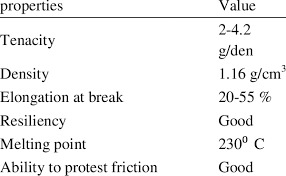What is Acrylic?
Acrylic is a thermoplastic also known as Polymethyl Methacrylate (PMMA). It is transparent, rigid, and shatterproof and ideal for making products like headlights, taillights, and other automotive components.
Consequently, many industries use this material as a glass replacement. The reason is that acrylic is colorless, clear, and exists in different forms, including acrylic sheets, pellets, and granules.
Its transparency gives it application in the manufacture of windows and enclosures around exhibits and tanks.
Acrylic is eco-friendly, as it is 100% recyclable. Its high molecular mass also makes it extremely tough and impact-resistant.
Other applications of this thermoplastic, include lenses, LCD screens, acrylic nails, security barriers, paints, medical devices, and furniture.
Properties of Acrylic

Acrylic is one of the most robust materials employed in manufacturing products across several industries.
Its beneficial properties, including transparency, brilliance, clarity, and translucence, make it the manufacturer’s favorite replacement for glass.
It also does not produce stringy chips during machining.
Let us examine the properties that make acrylic stand out in more detail.
- UV Stability: Designed to guarantee UV stability, acrylic’s resistance to UV light is excellent. This UV stability makes it ideal for making products for outdoor applications.
- High Impact Resistance and Malleability: It has a high malleability, allowing manufacturers to work it into any shape and design. It becomes malleable under high-temperature conditions and retains its shape after molding, especially with a high-pressure coolant. With up to 17 times the impact resistance of ordinary glass, this material has high impact resistance, making it difficult for parts to break through shock or impact.
- Excellent Temperature Resistance: Although acrylic has a melting point between 102-1220C, machined acrylic resists variations in temperature excellently. This allows for different types of heat treatment, including diffusion bonding. It also makes the material ideal for equipment or devices used in the medical and food industry.
- Lightweight: Plexiglass has half the weight of ordinary glass of the same dimension. This lightweight gives it a more versatile application, making CNC machining of acrylic easy.
- Surface Hardness: With a density ranging from 1.17g/cm3 to 1.20g/cm3, acrylic is a tough material with a high surface hardness. Furthermore, compared to other transparent polymers, this material has an unmatched ability to resist scratches. This ability is due to its optimal dimensional stability.
- Chemical Resistance: There is no fear of chemically damaging acrylic products since it has a high chemical resistance to most chemicals. This means they do not react with alkalis, diluted inorganic acids, detergents, or other materials, making acrylic ideal for producing fluidic and medical manifolds.
- Transparency: Acrylic has outstanding optical clarity and a refractive index of 1.49. It also allows up to 92% of light to pass unimpeded, making it one of the most optically clear materials ahead of glass and other plastics.
How to CNC Machine Acrylic?

Manufacturers use different methods to machine acrylic and acrylic blanks. The method employed is often based on client specifications.
Here are the major methods used for CNC machining of acrylic complex shapes for conventional machining processes.
CNC Milling Acrylic

This CNC machining acrylic process has one of the best chip controls and involves removing materials from a sheet of acrylic.
In this process, the CNC machine feeds the workpiece or acrylic sheet to cutting tools.
It does this in the same direction as the rotating cutting tool. This technique is ideal for machining complex geometry.
Cutting tools have edge rake angles with spinning multi-point for optimal CNC machining of acrylic.
This cutting tool allows the acrylic milling machine shop to undertake different types of cutting, including shallow cutting acrylic, deep acrylic cutting, peripheral milling, etc.
CNC Turning Acrylic

Manufacturing acrylic products using this process involves the removal of materials from an acrylic workpiece that is revolving.
However, unlike the CNC milling acrylic process, the cutting tool used here has a single rotating point.
When CNC machining acrylic using this process, the machine feeds the cutting tool over the surface of the acrylic workpiece in a straight line. It does this around the perimeter, removing materials until the product achieves desired shape.
The machining capabilities of CNC acrylic turning, including thread cutting, boring, grooving, and facing, among others.
Acrylic Engraving

This machining process involves using chip control to engrave a design, piece of art, or emblem on an acrylic CNC material. It involves an automated process that cuts a design into an acrylic workpiece.
This machine has a high cutting speed and precision, ensuring all engraved products with the same specification are 100% match.
Surface Finishes for CNC Machined Acrylic

With 30 years of CNC experience, Sam is dedicated to solving complex design and machining challenges, ensuring precision and efficiency for every customer project.
[email protected]Best Practice for Acrylic CNC Machining
Never plunge vertically into acrylic; employ helical ramping at a 3-degree angle to distribute forces, significantly reducing the risk of immediate melting or cracking at entry.
Contact Our CNC Machining ExpertSince transparency is one of the key properties of acrylic, this material rarely needs surface finishes. This is to prevent other materials from impeding the acrylic’s visibility.
However, when it becomes pertinent to apply surface finishes, here are the most suitable finishing methods for machining acrylic.
As Standard
This type of finish helps reduce the visibility of tool marks across the cut acrylic surface of a CNC machined acrylic. After applying this finish, tool marks will appear as swirls.
Bead Blast

This type of surface finish involves the high-pressure release of steel beads or fine glass onto the surface of a CNC acrylic.
Bead blast is a closely monitored finishing and manufacturing process occurring in a blasting cabinet. This process aims to reduce the visibility of tool marks on the surface of the CNC acrylic by giving it a matte frosted outlook.
Custom Polishing
Custom polished tools help improve the clarity of acrylic. The two major processes used for this type of surface finish include chemicals or wet sanding.
Although these processes increase the cost of production, they are still worth it since they boost the physical and aesthetic properties of CNC-machined acrylic parts.
Advantages of Using Acrylic For Your Parts


Thanks to its outstanding properties, acrylic has become the go-to material for several products and industries.
Being durable, chemical resistant, and transparent, this material provides manufacturers with the following advantages.
Easy to Fabricate and Shape
Acrylic is a thermoplastic that becomes malleable on exposure to heat. This quality makes molding it to most shapes easy.
It also allows manufacturers the leverage to experiment with molds made from wood or plastic, thereby reducing the cost of production in the long run.
Besides, on air blast cooling or other cooling methods, acrylic cools and holds the shape, allowing easy machining.
50% Lighter than Glass
Acrylic has several advantages over glass. One such advantage is its lightweight. It weighs 50% less than a glass of equal dimension.
Besides, regardless of its fabrication method, extruded acrylic, form acrylic, or cast acrylic is cheaper than glass.
Material Strength
Compared to glass, acrylic has high durability. Its impact resistance is over 10 times higher than that of glass. This impact resistance makes it, but if the impact is strong enough to break it, it fractures into large pieces that have dull edges. This makes it the ideal material for making products such as shower doors, sliding doors, and plexiglass windows, products with high safety concerns.
Additionally, also has better weather resistance than other forms of plastic and glass and remains useful over a broad temperature range.

Max
Max is a technical sales expert with 10 years of engineering experience who has solved hundreds of complex technical difficulties and challenges for customers.
🔗 Best Practice for Acrylic CNC Machining
Maintain high feed rates to ensure proper chip formation; insufficient feed causes rubbing, raising temperatures above 160°C and instantly melting the acrylic onto your cutting tool.
Easy to Maintain
Another advantage you get for using acrylic to fabricate your acrylic parts is its ease of maintenance, especially if you follow these rules;
When wiping slight blemishes off the surface of your acrylic product, the recommendation is to use a wet microfiber cloth.
Ensure the cleaning cloth is free from grit and particles, so you do not accidentally scratch the surface of your acrylic part.
Do not use rough paper towels, and avoid using ammonia-based products and other glass cleaners when cleaning the surface of your product. These products contain harmful chemicals that could destabilize acrylic’s structural bond, thereby leaving your acrylic part’s surface looking cloudy.
When cleaning, using soapy water remains the safest and easiest way to ensure your acrylic part keeps looking elegant and polished.
Applications of CNC Acrylic Parts
There are many applications of CNC acrylic parts across various industries. The major applications of CNC acrylic parts include;
Lighting and Electronics
Acrylic’s transparency makes it ideal for use in the lighting and electronics industry. Its high transparency and optical properties make it the best choice for building lamps, light tubes, and other light-emitting products.
Other attributes that make PMMA the top choice for lighting and electronics are its high level of light transmission and optical clarity.
Automotive Industry
Acrylic has several applications in the automotive industry, from designing car windows, and panels to fenders and motorcycle windshields.
Due to its ease of casting and fabrication and surface hardness, it is also ideal for producing covers for interior car lights, indicator lights, etc.
Construction And Architecture
Due to acrylic’s high impact and UV light resistance, it has several applications in the construction industry.
One such application is in the production of building doors, canopies, panels, window profiles, façade designs, etc.
Healthcare and Medical Industry
The medical industry uses acrylic polymer in the production of cabinets, incubators, glove boxes, and other devices used in the medical field.
Acrylic’s ease of maintenance is one reason it has a high rate of adoption in this industry.
Moreover, acrylic has a high compatibility rate with biologics, making them the ideal alternative for filling dental cavities.
Tips to Get the Best Results from Machining CNC Acrylic


Using CNC to machine your acrylic is one of the best ways to produce parts that meet your specifications. Here are some tips that would ensure a successful acrylic part manufacture;
- Ensure Material is Secure: CNC machining acrylic requires high precision. One way to achieve this rigid clamping is to properly secure your acrylic workpiece to the machine. Failure to do this would result in the manufacture of low-quality products, as excess vibration from the machine might change the position of the acrylic material you are machining.
- Use the Right Bit: There are bits designed for the CNC machining acrylic, and you must use them for this process. Avoid using a wood bit for cutting acrylic on CNC, as it would not produce the best result
- Set the Correct Feed Rate: Setting the correct feed rate is one way to ensure you get accurate and clean cuts. Not doing so might end up melting your plastic while cutting it.
- Check the number of Revolutions per minute (RPM): The feed rate and the RPM work hand in hand. But the type of acrylic you use for the machining process goes a long way to determining your best settings. If you use a fast RPM, the best action to prevent material melt would be to increase your feed rate.
Conclusion
On a CNC system, acrylic’s ease of fabrication and machining makes it one of the best materials one can work with, especially in areas with serious safety concerns.
AT Machining is a global company with a team of engineers with vast experience in the CNC acrylic machining process, helping you achieve the best result in the shortest time possible.


